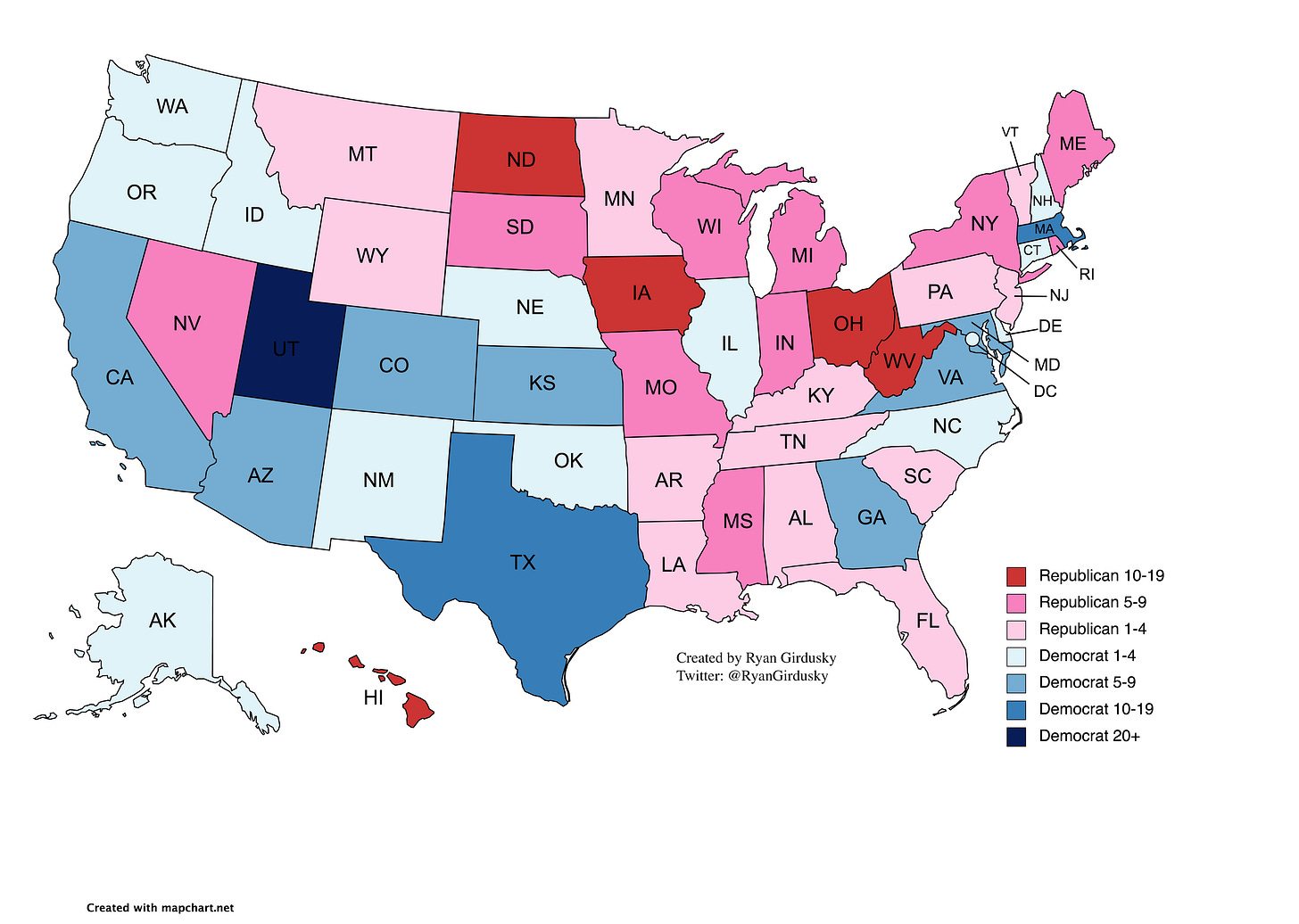While Republicans are preparing to see who enters the Presidential contest in two years, it’s worth looking at how states and regions of the country are moving politically as the midterms approach.
Regions and demographics tend to move together; as Nate Silver said, “all politics is national.”
We certainly saw that under Trump, as Hispanics and white working-class voters were moving towards the right, suburban and white college-educated voters moved sharply to the left. Despite Trump gaining support amongst Hispanic voters, the increasing diversity of the population is moving the politics of the nation more towards the Democrats. While Trump won about 38 percent of the Hispanic vote, that is still less than 50.1 percent - which means Republicans will lose forever unless they take on immigration.
So here are the trends of all 50 states, from Obama’s re-election in 2012 to Trump’s re-election bid in 2020.
These two elections are a pretty good comparison of one another. They were both re-election bids for incumbent presidents and similar national averages, with 2020 being 4.4 percent Democrat and 2012 being 3.9 percent Democrat.
Obviously, half a point makes a difference, and had the 2020 map been half a point more Republican, Trump would have been re-elected.
The light blue and light pink colors basically mean that states and counties moved within less than 5 points. In almost every case, the difference between the two elections was a point or two and shouldn’t be looked at for long-term trends. However, darker colors show a much bigger movement that we should note and see where voters’ minds are going and how it will affect our political future.
Here is the breakdown of how counties around the country moved from 2012 to 2020:
We’ve seen a lot of these trends before Trump. For example, the Atlanta, Phoenix, Austin, and Dallas metro regions are moving heavily towards Democrats while the Rust Belt and Rio Grande Valley are swinging hard towards the GOP.
I’m going to break down how these movements in each region will affect the midterms and Republicans’ chances of re-taking the House and Senate as well as the White House in 2024.




